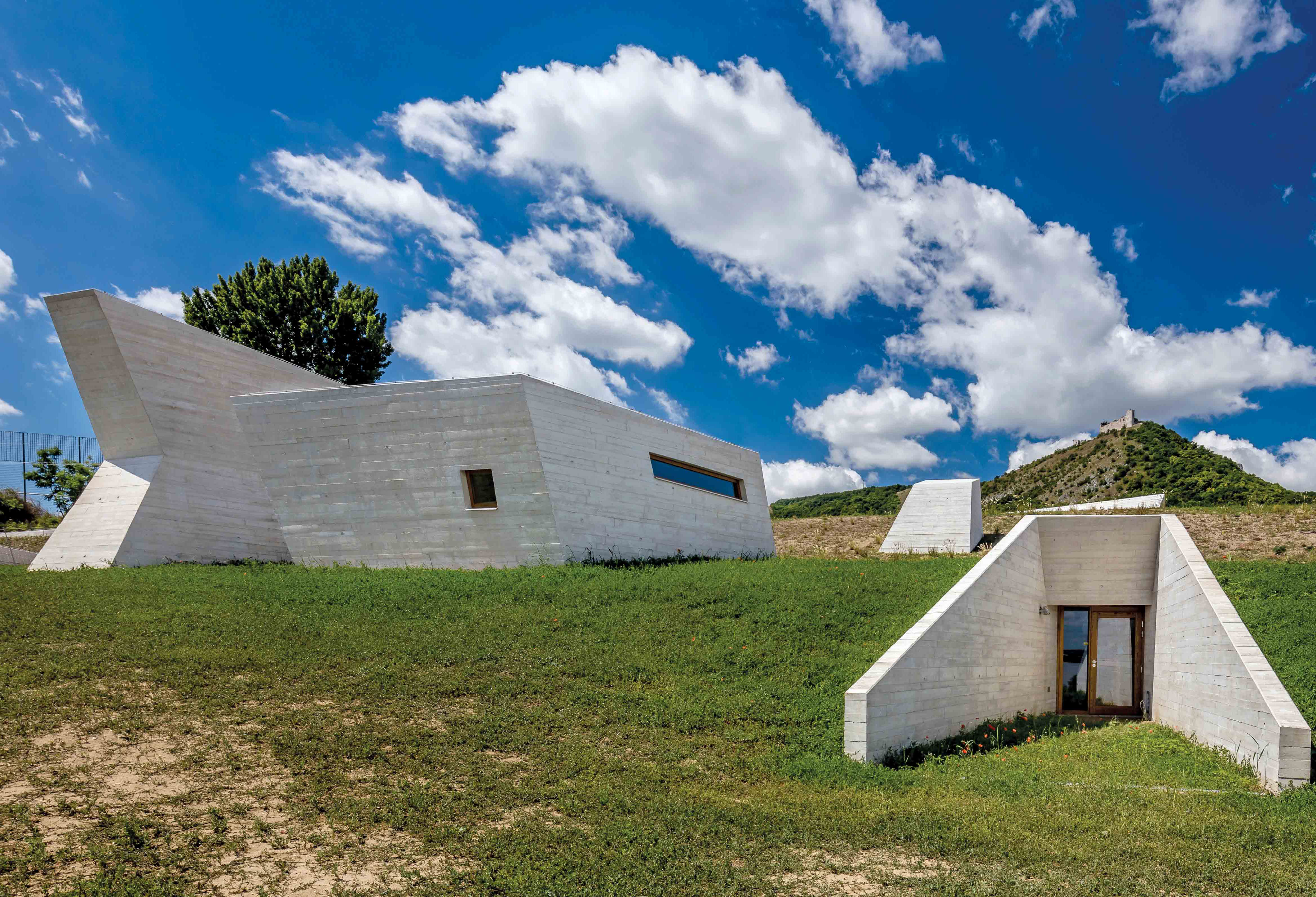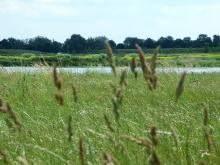
Europe has no shortage of interesting museums and one of the most special is located under the green hills of Pálava in the Czech Republic. Patrick Smith reports.
With only a few towers protruding from the landscape as a hint of what lies underneath, Pálava is an
It has since yielded a large number of archaeological artefacts, and leading concrete and cement supplier,
Most of the building is underground and the towers provide the only natural light, giving the feeling of entering a prehistoric cave.
The archaeological site and its artefacts, including skeletons, were integrated into the design of the building, requiring meticulous coordination between the archaeologists, designer, contractor and suppliers.
The resulting single-floor building includes training premises, a cinema and two galleries for individual exhibits.
In addition to respecting the treasure underneath, the building was also designed to seamlessly blend into the external landscape.
Cemex technologists worked closely with the client to design a concrete mix that would allude to the limestone rock formations that Pálava is known for.
Since it was important to maintain a uniform colour, a Cemex chief technologist remained onsite to supervise the placement of concretes for the towers as well as the entrance’s monolithic walls that transition into prefabricated elements with holes in the shape of mammoth tusks.
The special site called for other special concretes specifically chosen for their particular functions. The walls were internally and externally reinforced with a Cemex architectural concrete that was carefully textured to look like wooden boards.
Cemex also supplied an impermeable concrete for the underground structure and two different types of foam concrete for the floors.
Cemex foam concretes are often used to create steady base layers, even on the irregular surfaces one would expect to find in a hillside museum. The light material is self-levelling, compensating for any surface irregularities, and because it is breathable, it is also less prone to mould compared to other materials.
Due to the building’s complex geometric layout and atypical elements, Cemex frequently modified the water content in the concrete mix designs as needed.
Today, the museum is open to the public and layers of archaeological discoveries from the Stone Age have been preserved, uncovered, as an integral part of the building.
Hanson extends RSPB nature reserve
A further 96 hectares of restored land at
The land will double the size of the Ouse Fen reserve, making it bigger than 200 football pitches and setting it on the way to becoming the UK’s largest reedbed.
The Hanson-RSPB wetland project is the biggest planned nature conservation restoration scheme in Europe. It began in 2001 and is primarily being created for bitterns, a species that until recently was very rare in Britain. The reserve is also home to other scarce species such as marsh harriers, bearded tits, otters and water voles.
Hanson will continue to hand over parcels of land as sand and gravel extraction is completed, eventually forming a 700-hectare reserve and recreating some of the lost wetland habitat that once dominated the Fenland landscape, but was lost due to drainage and land use changes.
David Weeks, Hanson UK communications manager, said: “The Needingworth project is a fantastic example of progress through partnership, not just with the RSPB, but with many other national, regional and local organisations, most notably Cambridgeshire County Council.
“We recognise that quarrying, like farming, forestry and other rural activities, can have an impact on the countryside. But this project shows that we can make a very positive contribution to the UK’s landscape, its wildlife, its habitats and its biodiversity.”








